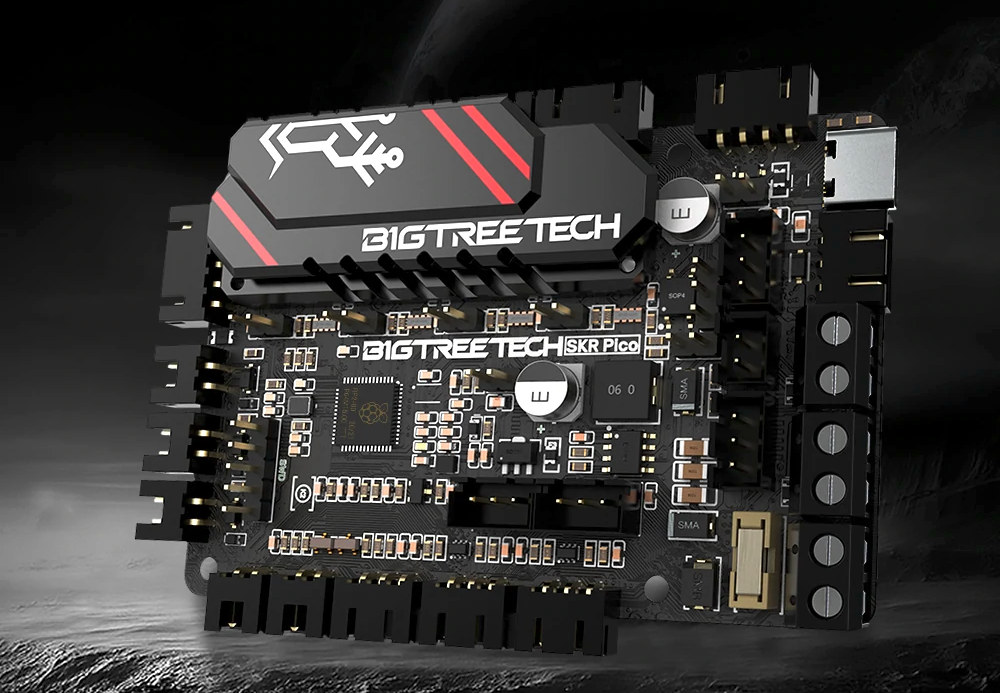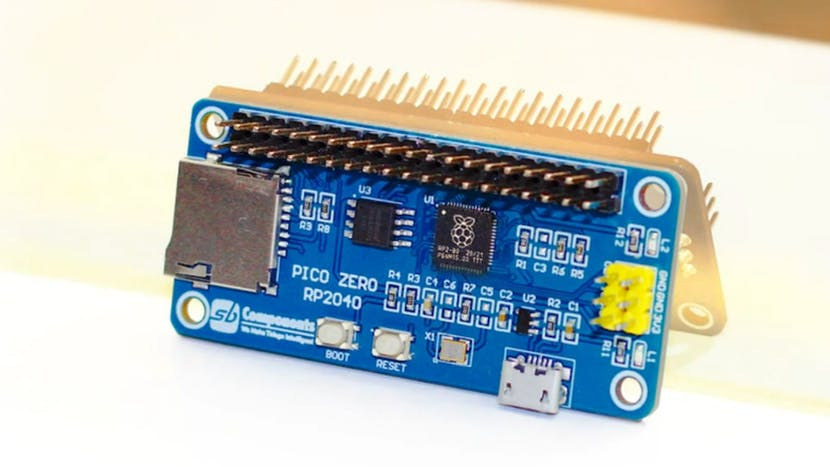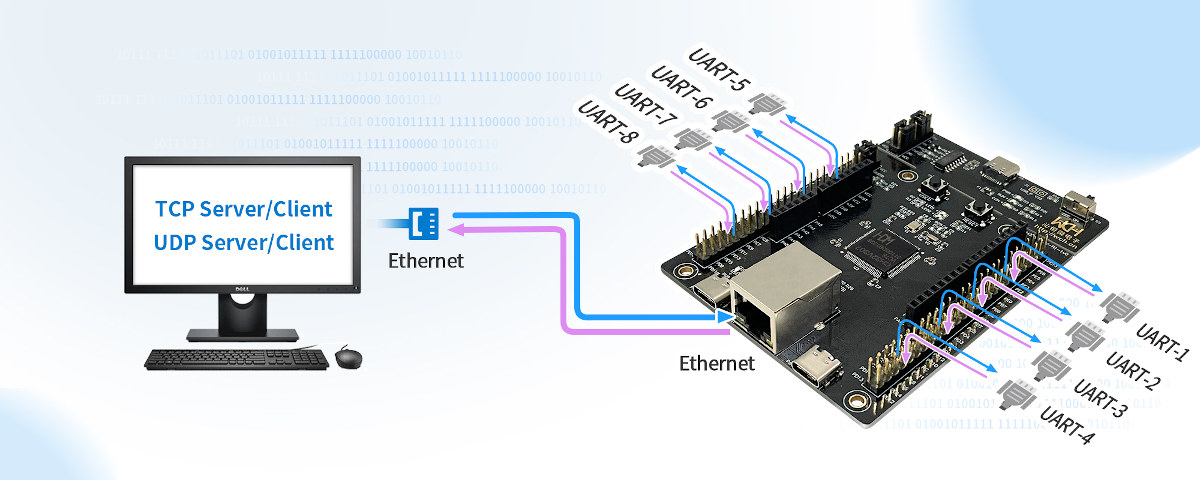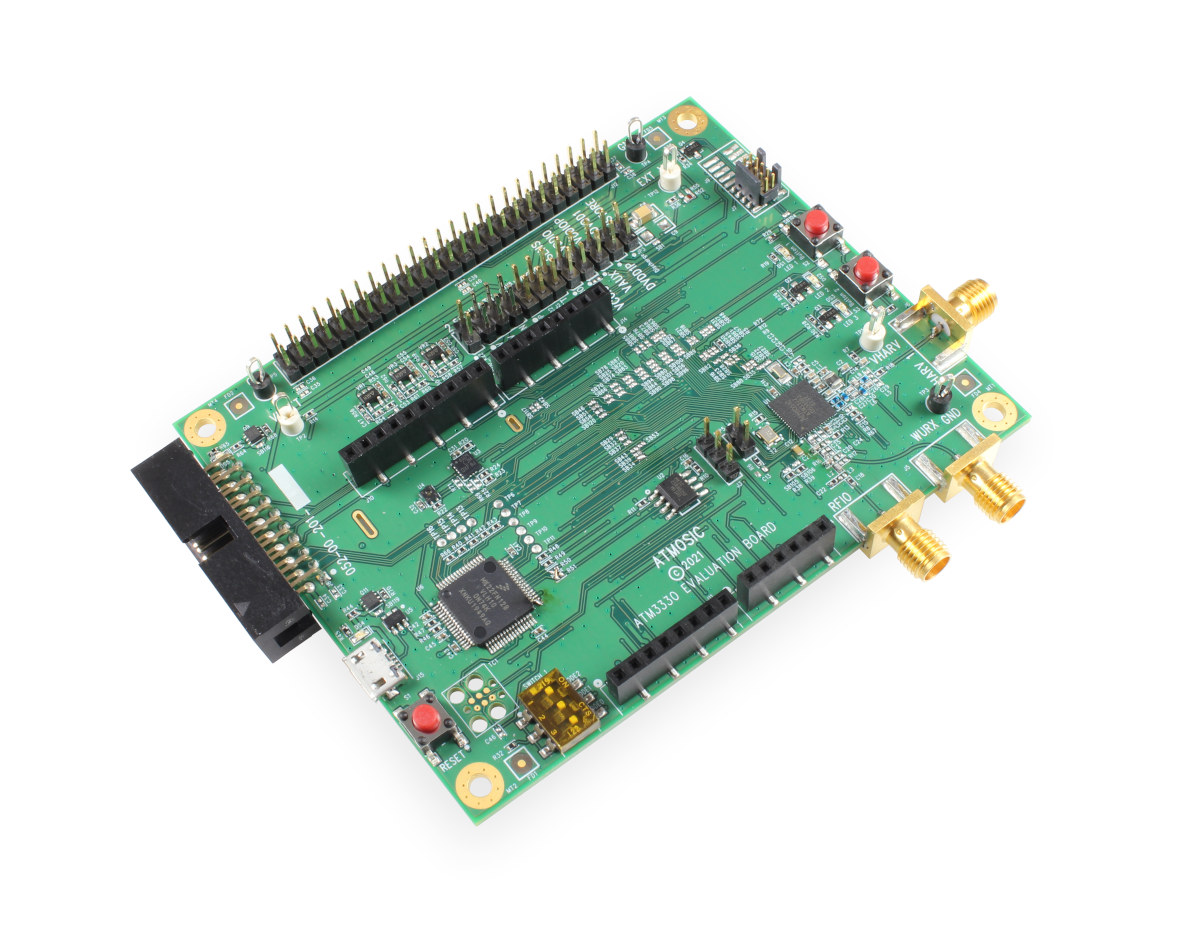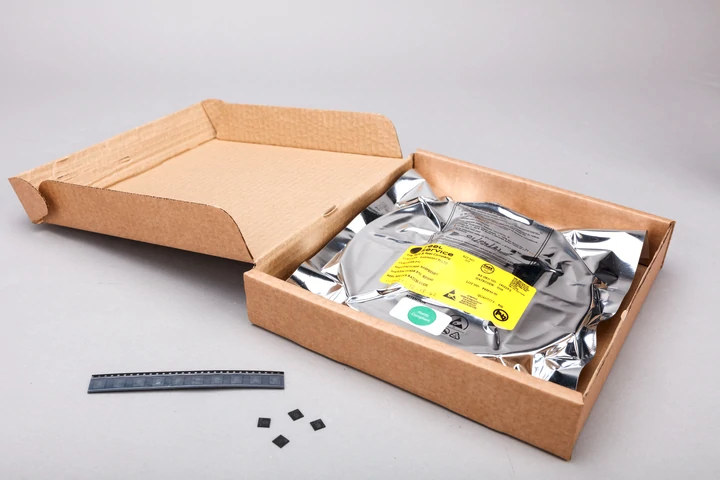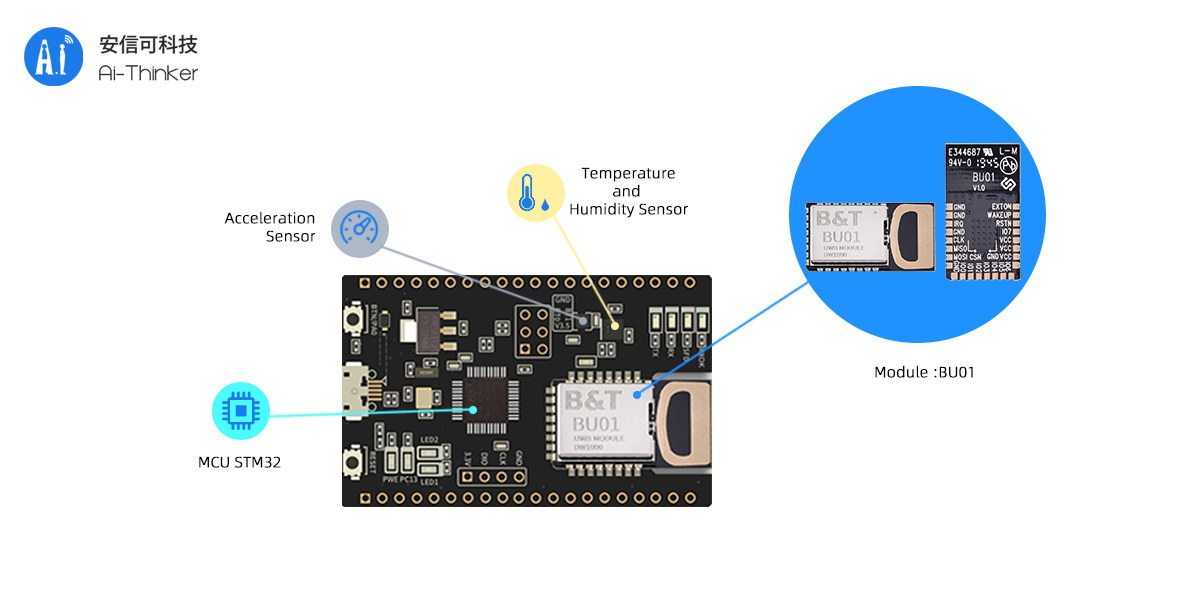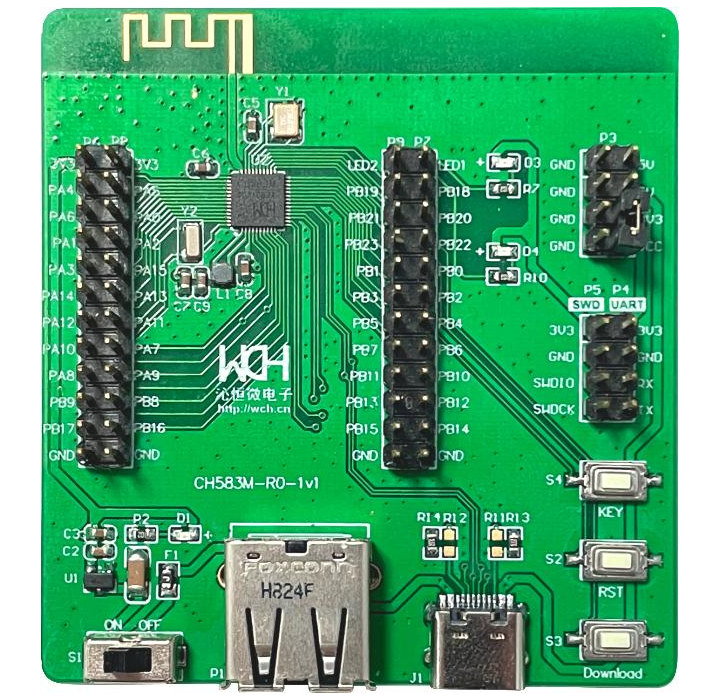BigTreeTech BTT SKR Pico V1.0 is a 3D printer controller board based on Raspberry Pi RP2040 MCU, compatible with Raspberry Pi Linux SBC’s, and specially designed for the compact Voron 0 3D printer, but also working with other models. The board comes with four TMC2209 motor drivers covered by a heatsink for cooling, as well as interfaces for temperature sensors, and a USB Type-C port to connect to the host computer, usually a Raspberry Pi board running Linux. BTT SKR Pico V1.0 3D printer board specifications: MCU – Raspberry Pi RP2040 dual-core Cortex M0+ microcontroller at up to 133 MHz with 264 kB of embedded SRAM Storage – TBD Motor drivers – Up to 4x TMC2209 drivers for X, Y, Z1, Z2, and E interfaces Temperature sensor interfaces – TH0, THB 2-way 100K NTC RTD sensors Host interface – USB Type-C port Misc – Built-in heatsink (Note: fan cooling is […]
StackyPi – A Raspberry Pi RP2040 board with Raspberry Pi Zero form factor (Crowdfunding)
SB Components’ StackyPi is a development board based on Raspberry Pi RP2040 MCU that happens to follow the Raspberry Pi Zero form factor. The board is equipped with 8MB SPI flash for the firmware, a MicroSD card socket, a micro SB port, two buttons, and a 40-pin GPIO header that makes it compatible with some Raspberry Pi uHAT and HAT expansion boards. StackyPi specifications: MCU – Raspberry Pi RP2040 dual-core Cortex-M0+ microcontroller @ up to 133 MHz with 264KB SRAM Storage – 8MB (64Mbit) SPI flash, MicroSD card socket USB – 1x Micro USB port Expansion – 40-pin GPIO header with GPIO, I2C, UART, SPI, etc… mostly compatible with Raspberry Pi header (3.3V I/Os) Misc – Reset and Boot buttons Power Supply- 5V via Micro USB port Dimensions – 65 x 30 mm (Raspberry Pi Zero form factor) The main advantage of such as board is that it can support […]
WCH CH32V307 RISC-V development board features 8 UART ports controlled over Ethernet
CH32V307V-EVT-R1 is a development board based on WCH CH32V307 RISC-V microcontroller with an Ethernet port, an USB Type-C port, and eight UART interfaces accessible through headers. As we noted in our article about CH583 Bluetooth 5.3 RISC-V microcontroller, WCH (Jiangsu Qin Heng) has started to share resources like datasheets and code samples through Github. They’ve done the same again for CH32V307 with schematics (PDF only), a datasheet in English, and firmware either bare metal or based on RT-Thread OS to control the eight serial interfaces over Ethernet. Let’s check CH32V305 and CH32V307 MCU specifications first: MCU core – WCH designed RISC-V4F 32-bit RISC-V core up to 144MHz FPU – Single-cycle multiplication and hardware division, hardware float point unit (FPU) ; Memory – Up to 64KB SRAM Storage – Up to 256KB Flash Networking – Gigabit Ethernet MAC, 10 Mbps PHY USB – 1x USB 2.0 OTG full-speed interface, 1x USB […]
Atmosic ATM33 – A Bluetooth LE 5.3 Cortex-M33 MCU with energy harvesting capabilities
Atmosic ATM33 is a Bluetooth LE 5.3 compliant Cortex-M33 microcontroller with optional energy harvesting capabilities that can enable up to 5x longer battery life and even battery-free solutions. The 64 MHz MCU also comes with 64 KB ROM, 128 KB RAM, 512 KB non-volatile memory, hardware security features, and SensorHub hardware block that allows data to be managed while the majority of the SoC, including the MCU core, is in a hibernated state. Atmosic ATM33 specifications: MCU core – Arm Cortex M33F core @ 64 MHz Memory/Storage 64 KB ROM, 128 KB RAM, 512 KB NVM Retention RAM configuration: 16 KB to 128KB in 16 KB step sizes Wireless Connectivity Bluetooth Low-Energy 5.3 compliant 2 Mbps, 1 Mbps 500 kbps, and 125 kbps PHY rates Supports Bluetooth Angle-of-Arrival (AoA) and Angle-of-Departure (AoD) direction finding Tx: 0 to 10dB 0.7mA receiver 16 MHz / Optional 32.768 kHz Crystal Oscillator Atmosic SensorHub […]
Wiliot Starter Kit for retailers features a smart coffee cup tracking temperature, fill level, location, etc…
Wiliot Starter Kit aims to demonstrate the ability of the Wioliot’s self-powered IoT Pixel and cloud services to retailers with a kit including a Coffee cup that’s capable of tracking liquid temperatures, fill level, motion, location changes, humidity, and proximity. The kit was previously only available to larger retailers through a “controlled release model”, but the company has now switched to an “open model” so that any retailers can use the technology to track products and packages. Let’s what’s included inside the start kit, and try to understand how the Wiliot solution works. Wiliot Starter Kit includes the following hardware: 1 x IoT Pixel-ready Coffee Cup 5 x Single-Band IoT Pixels mounted on cardboards 5 x Dual-Band IoT Pixels mounted on cardboards 1 x Single-Band Bridge Device 1 x Dual-Band Bridge Device You’ll also get 6 months of Wiliot Cloud Services, access to the Wiliot community forum & support Portal, […]
Raspberry Pi RP2040 is now available in quantities for 70 cents and up
Raspberry Pi RP2040 microcontroller has been available for one dollar in single quantities for about half a year, with at the time, 500- and 3400-pieces reel pricing to be determined. But Raspberry Pi Trading has now started to sell the chip in bulk with reels of 3,400 and 500 pieces directly to businesses for a unit price of respectively 70 and 80 cents via the new Raspberry Pi Direct website. Distributors have been selling reels for a while, but closer to 85 cents to 95 cents per unit. That basically means smaller quantities should still be purchased through distributors, but it makes more sense to purchase reels directly from Raspberry Pi Trading. Eben Upton also says they have enough wafer stock to produce 20 million chips with more on the way, so no shortage is expected. That contrasts with the current situation with many STM32 microcontrollers when some companies have […]
Indoor positioning BU01 development board can detect tiny body movements (Sponsored)
GPS is available for outdoor positioning, what about indoors? There is a positioning technology that is more accurate than GPS: UWB. The technology offers positioning accuracy within 10cm which greatly compensates for the shortcomings of the indoor RSSI positioning of past IoT products. UWB technology is a wireless carrier communication technology that uses a frequency bandwidth above 1 GHz. It does not use a sinusoidal carrier but uses nanosecond-level non-sinusoidal narrow pulses to transmit data and occupies a large frequency spectrum, hence the name “Ultra-Wideband”, or UWB for shorts. Besides positioning, UWB can also be used for data transmission with a rate of hundreds of megabits per second. BU01 development board features MCU – STMicro STM32F103 Arm Cortex-M3 microcontroller UWB module – Ai-Thinker BU01 module 50 I/O pins exposed for functions. Sensors – Onboard acceleration sensor, temperature, and humidity sensor Misc – User buttons and LED Power Supply – 5V […]
CH583 RISC-V microcontroller supports Bluetooth 5.3 LE
Following up on the CH572 RISC-V BLE microcontroller with 10KB SRAM, WCH has now introduced the CH583 RISC-V microcontroller with 32KB SRAM, 1 MB flash, and support for the latest Bluetooth 5.3 LE standard. The new microcontroller also offers a wide range of peripherals with two USB host/device interfaces, up to 40 GPIOs, four UART, two SPI, one I2C, up to 14 ADC interfaces, and more. WCH also offers CH581 and CH582 microcontrollers with a different minimum input voltage, less storage (256KB for CH581) and/or peripherals. CH581, CH582, CH583 specifications: MCU core – 32-bit RISC processor WCH RISC-V4A with RV32IMAC instruction set Memory – 32 KB SRAM Storage – 512KB non-volatile storage FlashROM: 448KB user application program memory area CodeFlash 32KB user non-volatile data memory area DataFlash 24KB system boot program memory area BootLoader 8KB system non-volatile configuration information memory area InfoFlash BLE Connectivity Bluetooth Low Energy (BLE) v5.3 Integrated […]


